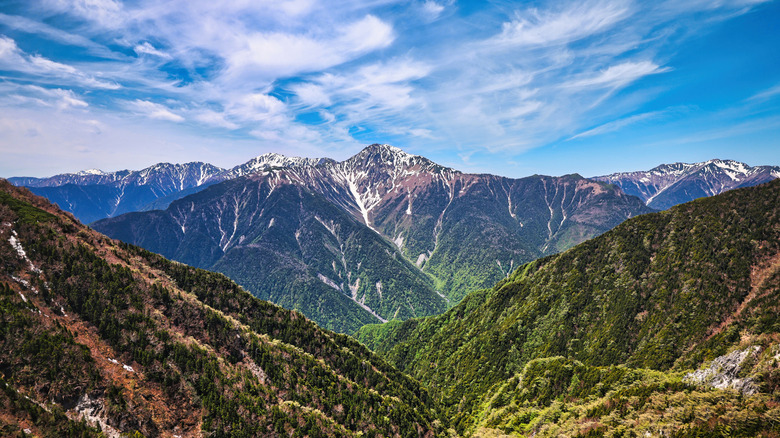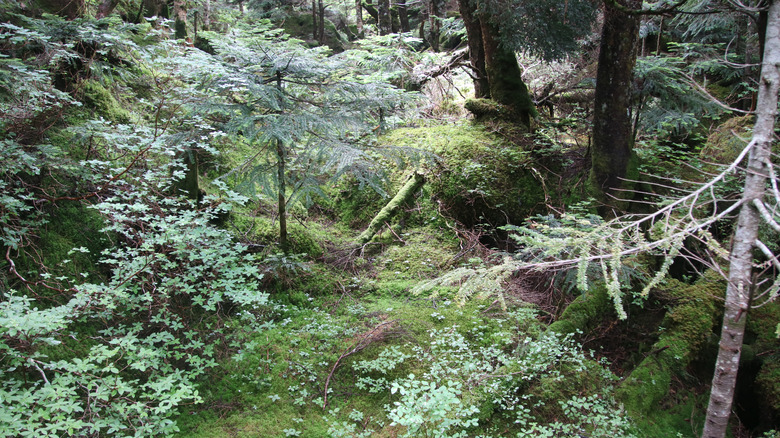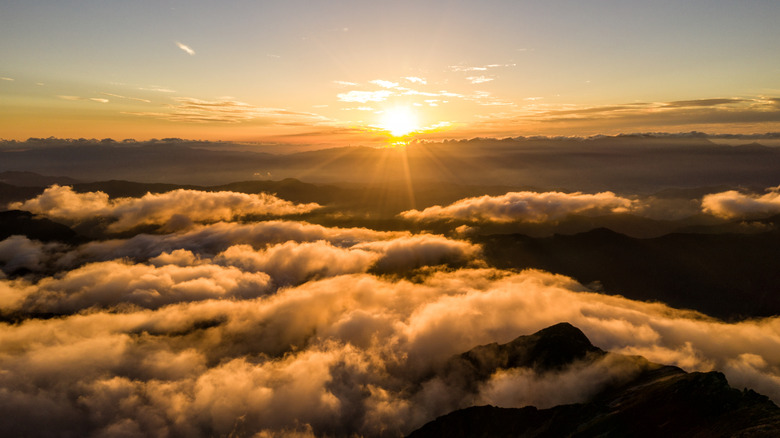Mount Kita, located in the northern part of Japan’s Southern Alps in Yamanashi prefecture, is the second-tallest peak in Japan, after Mount Fuji. Mount Fuji is arguably the most well-known mountain in Japan, so if you want to avoid the crowds, Mount Kita is the better choice. At 10,475 feet, it’s a challenging hike, but you will be surrounded by trickling waterfalls, misty forests, and epic ridge views. Once you reach the summit, you will be rewarded with one of the best views of Mount Fuji and the surrounding Southern Alps.
To begin your hiking adventure from Tokyo, start at Shinjuku Station. Look for the limited express train to Kofu, the capital city of Yamanashi prefecture in central Japan. The train ride to Kofu is about 90 minutes. Then, take a two-hour bus ride from Kofu to Hirogawara, the trailhead of Mount Kita. Hirogawara, which is 5,003 feet above sea level, is only accessible by bus or taxi. The bus only runs from late June to early November. Hiking outside the season is unsafe due to frigid temperatures, avalanches, and snow whiteouts. For the most optimal hike, we recommend spending a night in Kofu the day before so you can start your hike bright and early.
Hiking Mount Kita can be done in two days and is considered moderately hard. It’s definitely not a stroll in the park — parts of the trail can be rocky and steep, so you will need to be in decent physical shape to conquer the summit. To experience the gorgeous Japanese fall foliage, hike Mount Kita from September to October.
Preparing to hike Mount Kita
When hiking Mount Kita, pack essential items, like water and snacks, and have them within easy reach in your backpack. You might also want rain gear, sunscreen, a mosquito net for your head, and a phone easily accessible. Then, pack your sleeping bag, change of clothes, and toiletries at the bottom of your backpack. If you decide to camp to cut costs (instead of sleeping and eating at one of the mountain huts), you will need a tent, a stove, fuel, cookware, and food. Pack crampons and other winter gear if heading earlier or late in the season.
For a two-day hike, the goal is generally to reach one of the mountain huts to spend the night and hike to the summit at dawn to catch the sunrise. There are several options for huts near the summit. Kitadake-sanso sits on the ridge below the summit and offers free charging and Wi-Fi. Katanokoya is a more expensive option with a more robust dining menu. It’s also less than an hour from the summit. Both huts offer a shared room where you will sleep on the floor with your sleeping bag or a futon. If you are camping, the grounds of Katanokoya offer a spectacular view of Mount Fuji. Make a reservation for your accommodation through each respective hut’s website. At Katanokoya, dinner is usually served between 5 p.m. and 6 p.m, so get there before 4 p.m. if you want a plate of the famous pork shoulder steak, which will taste extra delicious after a long day of hiking.




